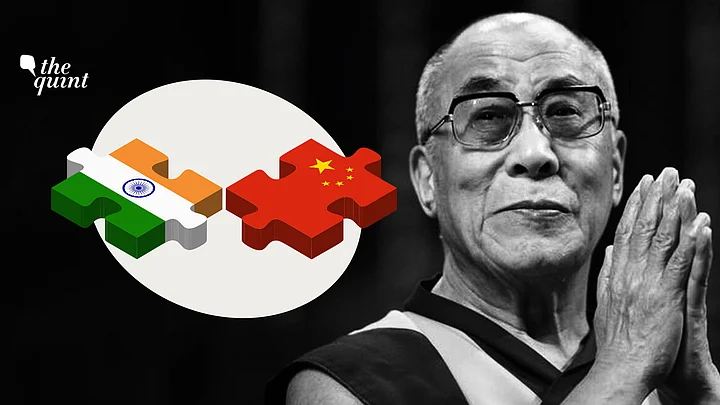Late one evening in August 2014, Prime Minister Narendra Modi had an unheralded meeting in Delhi, with the Dalai Lama, the Tibetan religious leader living in exile in India since March 1959. Apparently, the meeting did not go too well; the reason is unknown.
The fact remains that for centuries India and Tibet have shared values, not only in the spiritual realm (Mt Kailash, the sacred mountain of the Hindus is in Tibet after all), but also political, having a peaceful common frontier (which unfortunately for India, become the Sino-Indian border in 1954), without forgetting extensive economic and trade connections with the entire Himalayan belt, from Demchok in Ladakh to Kibithu in North East Frontier Agency (today Anjaw district of Arunachal Pradesh).
Post 2014, there was minimal institutional exchange between Dharamsala and Delhi, except for a discreet visit of the (Buddhist) Foreign Secretary (Harsh Vardhan Shringla) in July 2020.
That is why it came as a pleasant surprise when the Prime Minister tweeted on 6 July: “Spoke on phone to His Holiness the @DalaiLama to convey greetings on his 86th birthday. We wish him a long and healthy life.”
This simple call, made public via Twitter, is significant for a number of reasons.
Modi Government's Earlier Attitude Towards Dalai Lama
First, it comes after the February 2018 MEA Directive.
Foreign Secretary Vijay Gokhale had asked the Cabinet Secretary to issue a “classified circular advisory advising all Ministries/Departments of Government of India as well as state governments not to accept any invitation or to participate in any commemoration of the 60th anniversary of the Dalai Lama's arrival in India.”
Delhi followed the old Nehruvian concept that by pleasing China, Beijing would reciprocate in kind. Remember that this was after the Doklam episode, when China tried to change the status quo at the tri-junction of Bhutan-Tibet-Sikkim.
Then the ‘Wuhan Consensus’ took place in April 2018.
Xinhua then observed: “Chinese President Xi Jinping and Indian Prime Minister Narendra Modi reached a broad consensus on the overarching, long-term and strategic issues of global and bilateral importance”.
The Modi Sarkar thought India could work with Xi Jinping.
It was followed by ‘Chennai Connect’ in October 2019, where the leaders of both countries announced that they would “prudently manage their differences and not allow differences on any issue to become dispute.”
On the final day of the two-day informal summit at the seaside resort of Mamallapuram, it was decided to ‘consolidate strategic communication’. Tibet and the Dalai Lama became dirty words, not to be pronounced by anybody in India.
Modi's Outreach Rebalances India's China Policy
Ironically, it is China who helped Delhi come out of its torpor. The People’s Liberation Army (PLA) advanced in several areas in Ladakh in May 2020, at a time when India was struggling with the virus, widely acknowledged to have originated in the mega city, which had witnessed the ‘Consensus’ less than two years ago.
It was a big shock for most of the ‘China experts’ in India, who for years banked on a great (not to say eternal) friendship with communist China.
In a way, this phone call rebalances India’s China Policy (if there was ever one) at a time Beijing is preparing for the post-Dalai Lama era by putting in place strict ‘regulations’ to be able to decide who will be the 15th Dalai Lama (preferably from a good Communist family).
Interestingly, Radio Free Asia (Chinese broadcast) recently reported: “Just as the CCP’s centennial celebration ceremony are about to start, the CCP imposed regulations on Tibetan Communist Party members for their religious behaviour. [Since April] …all learning materials for Party members and cadres …need to adhere to atheist norms. …Party members and cadres should not believe in religion, to participate in religious activities, [they should] not spread or promote religion, [they should] not provide support for religious activities …without authorisation [of the Party].”
Isn’t it amazing? The Party does not believe in religion, but simultaneously wants to select and impose its own Dalai Lama.
The phone call hopefully indicates that though India, a secular state, will not intervene in the Dalai Lama’s succession; it will stand by the Tibetan leader’s decision.
PM Modi's Call First Step Towards Regular Contact
Since China unnecessarily started a confrontation in Ladakh, one lakh Indian troops remain on vigil in the formidably harsh climate of the northern borders.
The fact that the Prime Minister wished the Dalai Lama is certainly an important message across the Himalayas, that the old relationship between Tibet and India is very much alive, specially ahead of the 12th round of talks which will take place soon between the Indian Commander of 14 Corps and his Chinese counterpart.
It is particularly significant as the PLA is trying its best to recruit more Tibetans in its ranks, to one day raise a Tibetan unit to match the Special Frontier Force (SFF), composed of Tibetan refugees in India. The SFF fought well in August 2020, conquering the Kailash range, south of the Pangong Lake, for the Indian Army.
One can only hope that the initiative of the Prime Minister will be the first step towards more regular contact between Dharamsala and Delhi, and in particular, to jointly work for the preservation of the Buddhist tradition, another domain where atheist China is trying to lead the world.
(Claude Arpi, journalist and historian, is the director of the Pavilion of Tibetan Culture at Auroville. This is an opinion piece and the views expressed are the authors’ own. The Quint neither endorses nor is responsible for them.)
(At The Quint, we question everything. Play an active role in shaping our journalism by becoming a member today.)
